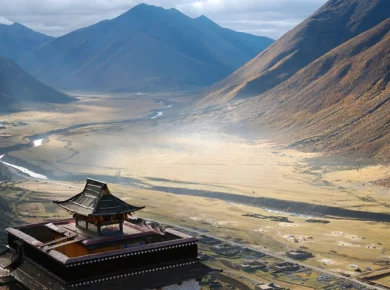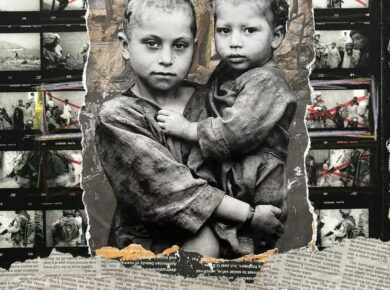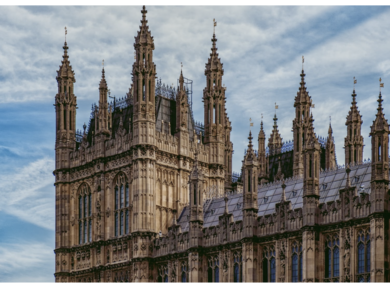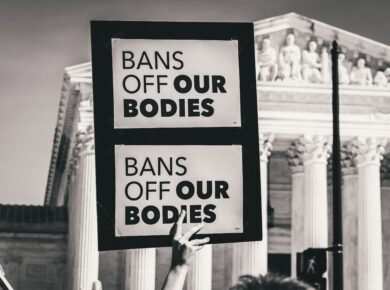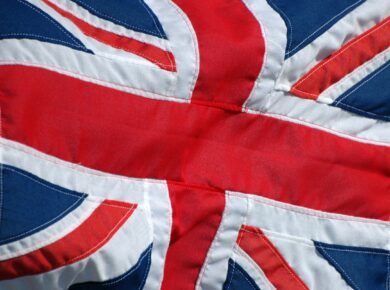Disclaimer: This blog solely reflects the opinion of the authors and should not be taken to represent the general views of IPPR’s management/ editorial team or those of fellow authors.
Over the past few years, Canada has seen major protests across the country. Whether these protests were in response to police brutality towards black Canadians, to the mass graves of Indigenous children dug up from Canada’s colonial past, or to Covid-19 restrictions and mandates, millions of Canadians have been eager to fight for a cause.
Notably, however, the public and political experts alike have remarked on a very important discrepancy of these protests: the timing and type of police response differs greatly in relation to who is protesting. That is, Canadian police are more likely to disperse protests led by people of colour (versus by white people) both sooner and more violently.
What explains this discrepancy? Does it even exist?
To answer these questions, it is important to briefly comb through Canada’s history with people of colour.
A Brief History of Colonialism in Canada
Colonial settlement on the territory of present-day Canada began in 1534, when French explorer, Jacques Cartier, sailed through the Gulf of Saint-Lawrence. Within the century after the first colonies were established, settlers began to import slaves from Africa, as well as massacre, torture, and enslave tens of thousands of First Nations people.
Following Canada’s declaration of nationhood in 1867, the Canadian Government initiated the first steps of what we recognise today as the cultural genocide of the First Nations. First Nations people were confined to reservations, where many First Nations practices were criminalised. Children were forcibly taken from their parents and forced into residential schools, banned from practising their culture or speaking their language. The Government’s very explicit goal was to assimilate the First Nations people, to indoctrinate them with Western values – to kill the “Indian” in them.
Given the horrifying nature of these measures, one could assume that they existed only long ago, far back in Canada’s history. This assumption would be misguided. Canada’s last residential school was closed in 1996, a harrowing reminder of just how recently these atrocities occurred.
Is it really unreasonable, then, to argue that racism – the very same racism that kept First Nations assimilation alive until the 1990s – is still alive and well in Canada today? I do not think so. And many experts agree with me.
Although not explicit, the ghost of colonialism still rears its ugly head. In the minds of Canada’s people. In their culture. In their social and political institutions, like the police.
And this is evident in the way police respond to masses of white people versus masses of people of colour.
Context and Comparison: “The Freedom Convoy”
Since 28 January 2022, tens of thousands of Canadians have taken to the streets of Ottawa with three goals in mind: to lift all national Covid restrictions, to remove Prime Minister Trudeau from office, and, ultimately, to “make Canada free again.”
From the very start of the protest, the demonstrators have caused the city of Ottawa major inconveniences. The initial protesters, who were truckers from across the country, arrived in the nation’s capital in a 45-mile-long convoy of big-rigs. Since their arrival, they have been blocking major arteries of the downtown area and producing heavy noise pollution with their horns. Ottawa residents are infuriated.
Beyond these inconveniences, the Freedom Convoy (as the truckers call themselves) have also demonstrated dangerous and aggressive behaviour: Many of the primary protest organisers have been associated with right-wing ideology and white supremacy. Other supporters have been recorded waving Confederate and Nazi flags on the streets. Still others have desecrated national monuments with alcohol and urine, harassed mask-wearing Ottawa residents and business owners, and even assaulted journalists on Parliament Hill.
All this chaos warrants a quick and effective reaction from police; and we know this reaction is possible, because Canadian police have done it many times before.
But that is not how this situation has turned out.
The Freedom Convoy lasted three weeks in Ottawa. In the nation’s capital, in front of the Prime Minister’s offices, tens of thousands of aggressive protesters were allowed to set up camp without being bothered too greatly. In those initial three weeks, the main dispersion tactic used by police was… reason. They tried to talk with the protesters. They begged for a peaceful resolution. They sent them calm warnings through Twitter. Only on the weekend of 19 February 2022 did they start using more aggressive dispersion methods, like the use of batons and tear gas and arrests. All in all, the Ottawa police have demonstrated an incredible amount of restraint – it almost makes them seem reasonable.
I have many questions about this: Where were the rubber bullets? The pepper spray? The tear gas? Where was the beating and the yelling and the usual show of force that we tend to see with police responses to protests?
And why did it take police three weeks to finally crack down on tens of thousands of aggressive people who directly threatened the Government?
We know that quick and violent dispersion is the norm, as it happens all the time in Canada. For instance, in the summer of 1990, four thousand Canadian soldiers were sent to disperse 52 peaceful members of the Mohawk community in Oka, Quebec, who had set up a blockade – much like the Ottawa truckers – to protect their land. On 21 November 2020, Ottawa police violently broke up a BLM protest that was blocking a major downtown intersection; the protesters were peaceful, and yet 12 of them were arrested within the first 36 hours of the protest. In Montreal of that same year, police used rubber bullets and tear gas on BLM protesters in the downtown area dispersing the unruly crowd after only a few hours of protest. Clearly, the police are capable of effectively taming crowds the minute they become aggressive (and even when they do not become aggressive); so why did it take three weeks to disperse the Freedom Convoy?
The answer, to me, seems clear.
The majority of protesters of the Freedom Convoy are white. Even when they are aggressive, they are thought to still be reasonable – this is evidenced by the unadulterated calm and patience with which the Ottawa police have handled the situation.
People of colour are not afforded that same assumption. They are a threat – they have always been a threat. Early in the country’s history people of colour were controlled through enslavement and killings. Next they were controlled through the desecration of their culture and the territorial confinement of their people. As time goes on, extreme measures become less and less permissible – so how does a Government continue to control those it deems undesirable, unruly, un-white? It silences them.
From my perspective, it is abundantly clear that Canada is, truly, the Great White North.
By Serena Celeste
Serena is a current postgraduate student at UCL completing her master’s degree in Human Rights. She is interested in all areas of politics, though is especially passionate about human rights research and the intersection of political science and psychology.

